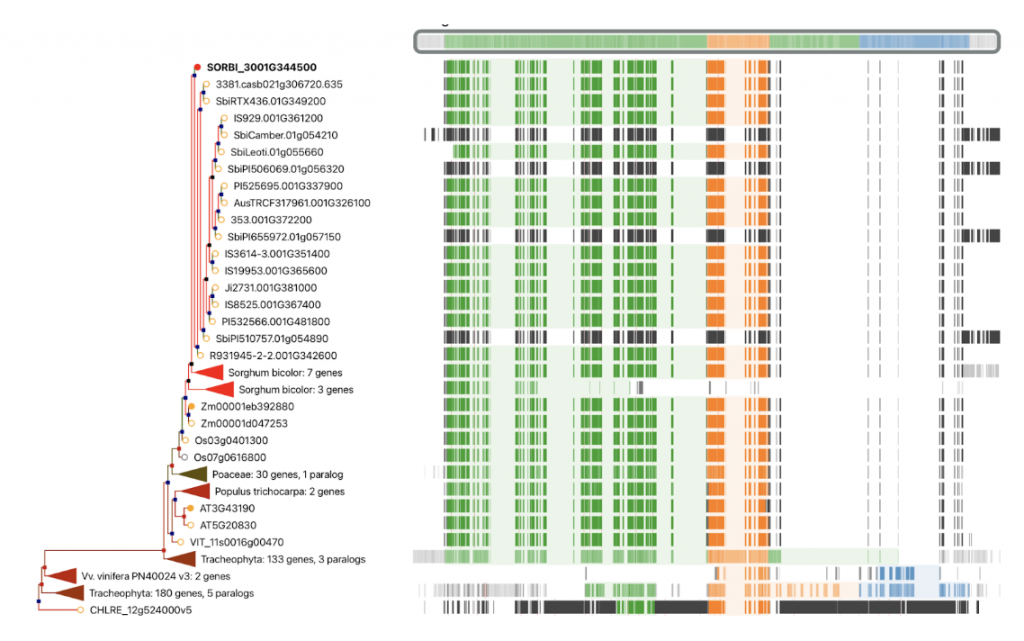Comparative Assessment of Sorghum and Maize Proteomes Under Drought Stress Reveals Differentially Expressed Proteins and Their Associated Pathways
Sorghum (Sorghum bicolor) and maize (Zea mays) are major staple cereals globally. As with other crops, the negative impact caused by adverse effects such as drought limits crop production, as well as the consistency of that production. With global warming an ever looming issue, resistance to water stress has become a trait of paramount importance. It is well known that sorghum has greater drought tolerance than maize. However, research into the mechanisms underpinning these differences are lacking. Scientists from the University of the Western Cape and Stellenbosch University compared the proteomes of sorghum and maize, when both crops were grown under drought conditions. Elbasheir Ali et al. observed that although both sorghum and maize showed increased proline content, an amino acid which enhances the ability to retain water, the accumulation of proline was significantly greater in sorghum roots than those of maize. Key metabolic pathways were determined through comparison of the two species. Phenylpropanoids, sucrose, melanin-related metabolites and indole acetic acid (auxin) were identified as key components of the greater water stress tolerance between sorghum and maize. Phenylalanine/tyrosine ammonia-lyases (PTAL), enzymes in the phenylpropanoid biosynthesis pathway, were down regulated in both sorghum and maize grown under drought conditions, which was correlated with increased amounts of cinnamic acid. In addition, sorghum showed a greater reduction in sucrose synthase, an enzyme used in the production of sucrose, which functions as an osmotic regulator. Elbasheir Ali et al. speculate this could be one of the contributing factors to sorghum plants being able to maintain osmotic regulation under adverse conditions when compared with maize. The researchers also indicated that sorghum may mediate its response to drought with the accumulation of auxin and indole acetic acid, thus giving it an advantage over maize. These findings warrant further study on the genetic mechanisms of drought resistance, and in turn, present opportunities for breeders to bring the drought resistance of sorghum to other agronomically important crops like maize.
SorghumBase examples:


Reference:
Ali AEE, Husselmann LH, Tabb DL, Ludidi N. Comparative Proteomics Analysis between Maize and Sorghum Uncovers Important Proteins and Metabolic Pathways Mediating Drought Tolerance. Life (Basel). 2023 Jan 6;13(1):170. PMID: 36676117. DOI: 10.3390/life13010170. Read more
Related Project Websites:
Ndiko Ludidi’s page, Center for Excellence in Food Security https://foodsecurity.ac.za/people/professor-ndiko-ludidi/

